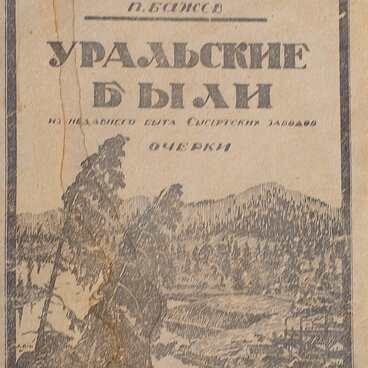Bookcases as specialized furniture for storing literature appeared in Europe in the first universities: Oxford, Cambridge and others — in the 13th century. At first those were just tall wooden shelves, sometimes covered with panels. Several centuries later, the French replaced the opaque doors with glass. Since then, their overall design has not had any fundamental changes. However, in rich households, expensive types of wood were used for book cabinets which were additionally decorated with carvings and precious metals. Simpler materials were used in mass-produced items. Every owner of such a cabinet tried to decorate it from the inside — with great titles.
Thus, Pavel Petrovich Bazhov, when choosing books for his children, adhered to the basic idea: “Bad literature should not be read at any age, and especially inа что childhood, when ideas about basic concepts are laid and taste is formed.” If someone from home took up reading “stupid” books, the writer got angry.
Even as a school teacher, Bazhov sought to instill in children a love of the Russian language, so in preparing his lessons he used the works of classics: Pushkin, Nekrasov, Lermontov, Tolstoy, Turgenev, Leskov, Chekhov, Gogol, and Chernyshevsky. The books by these authors were kept in his home library and given to students. Bazhov always talked about what he had read, deepening his listeners’ understanding of literature.
Pavel Petrovich’s favorite writers were Pushkin and Chekhov. From the traditional children’s literature, the family of the famous Ural fairy tale author revered Krylov’s fables and fairy tales by Hoffmann, the Brothers Grimm, and Perrault. In terms of their contemporaries, the family preferred the works of Mayakovsky, Bagritsky, and Gorky, and appreciated war poets.
Bazhov tried to replenish his library at every opportunity: he brought books from business trips, ordered novelties, and followed publications. Among new releases, he chose books that would be great for children.
The youngest daughter of the writer, Ariadna, recalled that her father taught her to read, using ABC books, of which there were several in his collection, including pre-revolutionary editions of the early 20th century — with the letter “yat” and “anachronistic” texts. Ariadna learned to read and write quite quickly, and soon it became her main hobby. Ariadna Pavlovna did not lose the skill of speed reading both fiction and scientific literature until her advanced years.
Thus, Pavel Petrovich Bazhov, when choosing books for his children, adhered to the basic idea: “Bad literature should not be read at any age, and especially inа что childhood, when ideas about basic concepts are laid and taste is formed.” If someone from home took up reading “stupid” books, the writer got angry.
Even as a school teacher, Bazhov sought to instill in children a love of the Russian language, so in preparing his lessons he used the works of classics: Pushkin, Nekrasov, Lermontov, Tolstoy, Turgenev, Leskov, Chekhov, Gogol, and Chernyshevsky. The books by these authors were kept in his home library and given to students. Bazhov always talked about what he had read, deepening his listeners’ understanding of literature.
Pavel Petrovich’s favorite writers were Pushkin and Chekhov. From the traditional children’s literature, the family of the famous Ural fairy tale author revered Krylov’s fables and fairy tales by Hoffmann, the Brothers Grimm, and Perrault. In terms of their contemporaries, the family preferred the works of Mayakovsky, Bagritsky, and Gorky, and appreciated war poets.
Bazhov tried to replenish his library at every opportunity: he brought books from business trips, ordered novelties, and followed publications. Among new releases, he chose books that would be great for children.
The youngest daughter of the writer, Ariadna, recalled that her father taught her to read, using ABC books, of which there were several in his collection, including pre-revolutionary editions of the early 20th century — with the letter “yat” and “anachronistic” texts. Ariadna learned to read and write quite quickly, and soon it became her main hobby. Ariadna Pavlovna did not lose the skill of speed reading both fiction and scientific literature until her advanced years.



